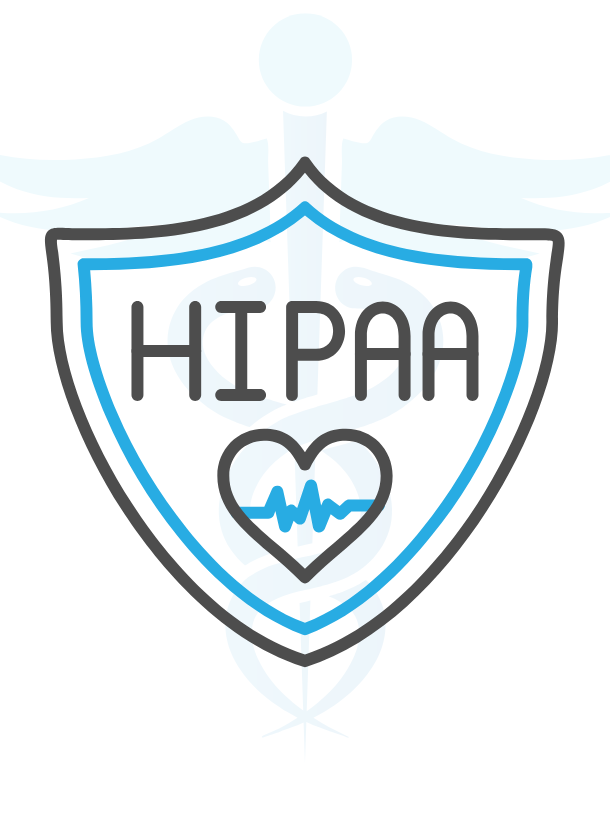HIPAA Origin and History. When Was HIPAA Enacted?
There’s more to the Health Insurance Portability and Accountability Act (HIPAA) than data protection and avoiding penalties. Learn how HIPAA came into being and how it has evolved over the years.





With proper guidance from HIPAA experts and the right HIPAA compliance training, healthcare clinics and providers can easily establish processes and procedures that are fully HIPAA compliant. But when it comes to ensuring continued compliance year after year, staying updated with the latest rules and regulations that fall within HIPAA’s purview, a deeper understanding of HIPAA’s origin and history is essential.
HIPAA Timeline: When Was HIPAA Signed Into Law?
HIPAA came into effect in August 1996, when the US Congress passed the act. President Bill Clinton signed it into Public Law 104-191. Since then, the government has introduced additional rules and provisions that have helped HIPAA evolve over time, remaining current and relevant even in the digital era. Here’s a brief timeline of HIPAA and its most important milestones.
-

Aug, 1996: HIPAA becomes a law
-

Nov, 1999: The Privacy Rule is proposed to set standards for how PHI can be used and disclosed
-

Feb, 2002: The Security Rule is proposed to protect digital health data
-

Aug, 2003: Privacy Rule comes into effect
-

Apr, 2005: The Enforcement Rule is proposed to strengthen HIPAA compliance
-

Apr, 2005: Security Rule comes into effect
-

Mar, 2006: The Enforcement Rule comes into effect
-

Feb, 2009: The Health Information for Economic and Clinical Health (HITECH) Act is introduced
-

Oct, 2009: HITECH Act expands HIPAA enforcement, data breach notification rules
-

Nov, 2011: The Office for Civil Rights (OCR) begins HIPAA compliance audits
-

Mar, 2013: The Omnibus Rule comes into effect to expand coverage for Business Associates and patient rights
-

Dec, 2016: OCR steps up HIPAA enforcement
-

2020-2025: Updates to reflect telehealth, cloud computing, and cybersecurity threats
The Main Goals of HIPAA
The early vision and the key purpose that led to the passage of HIPAA was centred around healthcare insurance reform and employee benefit protection. However, over time, HIPAA has evolved to establish a robust framework for managing patient information. It outlines important privacy and security measures for healthcare data management and is often cited as foundational for healthcare compliance codes worldwide. Below are the primary goals of HIPAA at the time of publication.
- To ensure health insurance coverage for employees even when they are in between jobs
- To create a framework for reducing healthcare data fraud
- To establish secure data sharing between healthcare providers, supporting vendors, and patients
- To encourage electronic transactions and protect the privacy and security of health information in digital spaces
- To improve public trust in healthcare systems

What Are the 5 Core HIPAA Titles?
HIPAA can be broken down into five core titles or legislative sections, each of which addresses specific legal, administrative, or regulatory concerns. To achieve comprehensive and ongoing HIPAA compliance, it is essential that healthcare providers and clinics understand the meaning of these titles and their relevance to day-to-day healthcare operations.
Health Insurance Portability
Administrative Simplification
Tax-Related Health Provisions
Group Health Insurance Requirements
Revenue Offsets

Why The History Of HIPAA Still Matters Today
When healthcare providers and clinics understand how HIPAA came into being and how it has adapted to changes in technology, government policies, and market fluctuations over the years, they are better equipped to stay aligned with its intent of protecting patient rights and data security.
Knowing the origin of HIPAA empowers healthcare professionals and administrative staff to develop more effective clinic policies and take proactive steps for risk management. It also paves the way for more targetted HIPAA compliance training and efficient resource allocation for secure data management infrastructure.
Frequently Asked Questions About HIPAA Origin
Are Your Patient Communications in Compliance with HIPAA?
Speak to our HIPAA Compliance experts who can help ensure your healthcare communication is HIPAA-compliant!